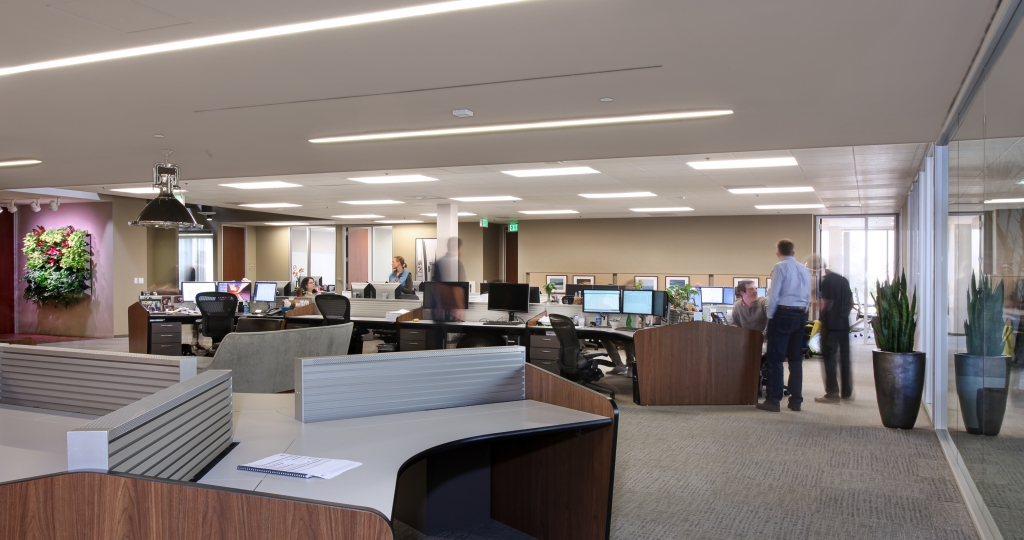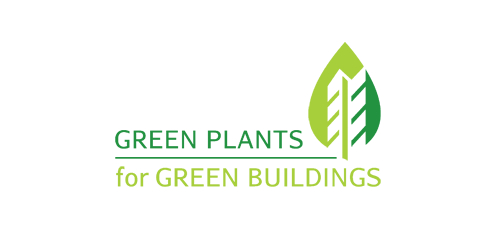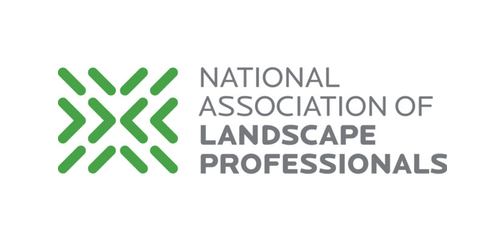Become WELL certified using plants and be part of the growing group of individuals and businesses taking part of the WELL Building Standard programs.
Why Use the WELL Building Standard?
Health is wealth might be an old saying, but its implications are more relevant than ever. We have learned how much our environment plays a part in our well being. Initially, buildings, homes and other indoor environments were basically created to keep nature out – wind, rain, heat, and cold – without much concern over indoor air quality, lighting and its structural influence on people. Years of research are now turning the tables and studies confirm the importance of creating an environment that constitutes good health and the many factors that influence it.
“We believe that buildings should be developed with people’s health and wellness at the center of design. The WELL Building Standard takes a holistic approach to health in the built environment addressing behavior, operations and design.” The WELL Building Standard
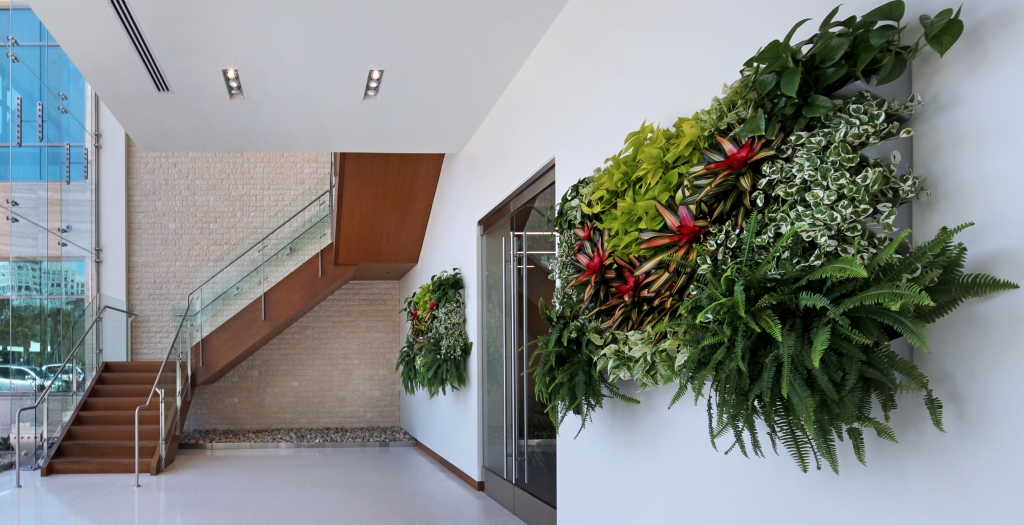
By locking nature out, humankinds’ very roots were cut, and the disconnection produced ill effects on our health and well-being. Luckily we now realize we are entwined directly with the sky, sea, land, plants and animals in everything we do. The green movement has moved us forward, exponentially washing over every aspect of our lives, bringing the importance of nature back into our surroundings.
Biophilia
All this has lead to our right to have a space, indoor or outdoors, that encourages and uplifts our well-being. In a report by the World Green Building Council, it shows the many ways buildings impact people and proves the built-environment does relate directly to our health, well-being, happiness and productivity. Human Spaces: The Global Impact of Biophilic Design at Work, describes the results of research that shows connecting to nature is an adaptive human function that allows and assists in psychological restoration. In other words, nature breathes peace into our souls.
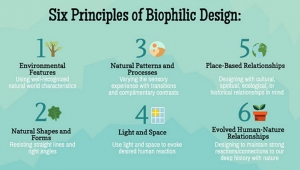 Not only do parks and water elements around urban settings provide the benefits of biophilia, biophilic buildings greatly improve well-being.
Not only do parks and water elements around urban settings provide the benefits of biophilia, biophilic buildings greatly improve well-being.
Elements in the form of nature-forming patterns and colors incorporated in the interior design, along with the benefits of foliage make us feel good. It is well known that plants placed strategically indoors provides both psychological and physical health benefits.
- Plants improve air quality by removing pollutants and adding oxygen to the surroundings.
- Dry conditions from recirculated air is improved with humidity from foliage.
- Plants reduce stress by providing a relaxing, restful ambiance to a room.
Using plants help incorporate health and well-being into architectural and interior designs. A poll taken by Human Spaces and published in The Global Impact of Biophilic Design reported natural elements in the workplace environment such as greenery and sunlight gave workers a 15% higher level of well-being. And they were 6% more productive and 15% more creative.
How Can You Use Plants to Become Well Certified?
The WELL Building Standard incorporates 7 concepts: Air, Water, Nourishment, Light, Fitness, Comfort, and Mind. The concepts are the basis for becoming WELL certified through various programs for commercial and institutional office buildings programs. Pilot programs for retail, multifamily residential, education, restaurant and commercial kitchen are also underway to bring more wellness to the built environment. Each of these programs require plants to fulfill the biophilia requirement present in the certification process.
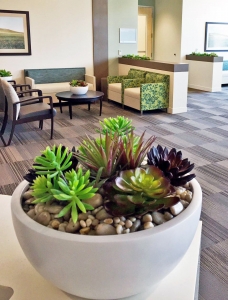
Adding Greenery
Placing plants in beautiful containers or in planter beds is a perfect way to bring greenery inside. To become certified, a minimum of 1% of the building’s floor area, per floor is part of the requirements. Also, installing a living wall that either covers the largest available wall or having one per floor meets the certification guidelines as well; and is a fast growing trend to add foliage. Plants can stand prominently as part of the interiors’ decor. Or plants can be set back to bring in subtle effects, not necessarily seen, but definitely felt.
Three Levels of Certification
The WELL Certification process requires a passing score in each of the seven categories and is awarded at three levels: Silver, Gold and Platinum. The certification not only adds value to the health and happiness of the building occupants including homeowners, it can also bring increased savings and productivity to the tenant or building owner.
It’s Important
The quality of our surroundings is becoming more important as studies give evidence we need to keep our connection with nature. The built environment consciously and subconsciously shapes habits, choices and stress levels. It can also be a factor on regulating our sleep-wake cycle along with a passive influence on our day-to-day lives.
Plants are finally receiving their due respects as part of this prominent and growing movement that proves design can make the difference between a healthful life and a stressful one. And choosing to utilize plants as part of the process to become WELL certified is a definite step toward bringing the wealth back into health.

